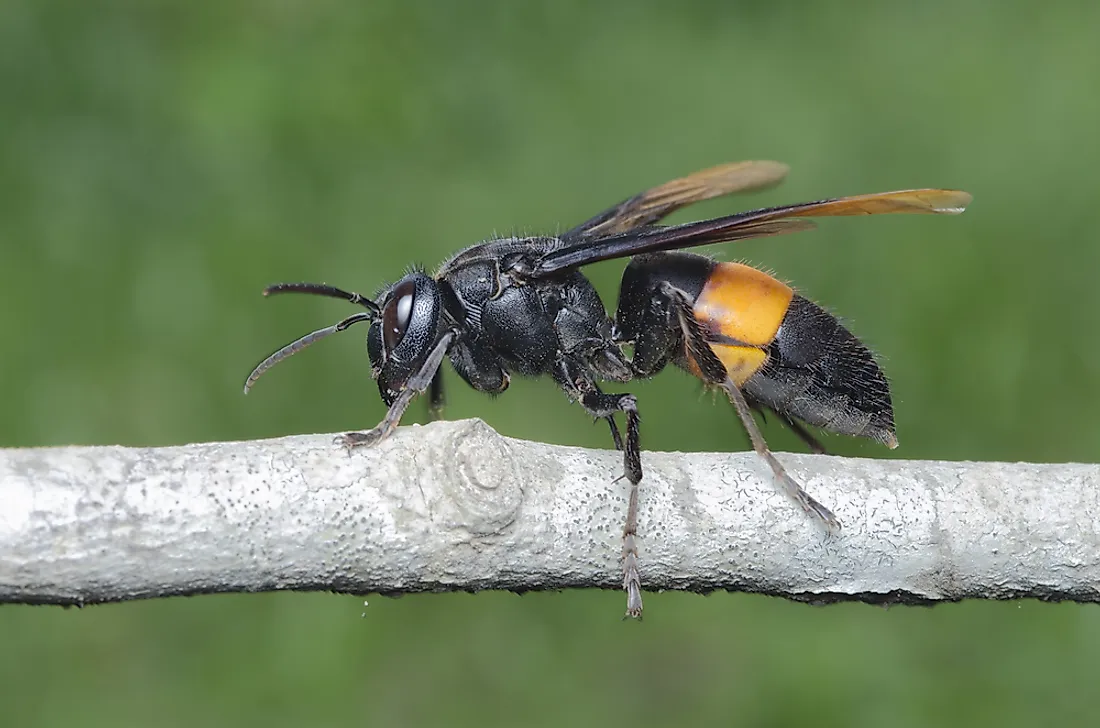The Asian Giant Hornet - The World's Largest Hornet Species

Hornets are the largest eusocial wasps in the world. They resemble their closest relatives, yellowjackets. Hornets belong to the genera provespa and vespa. Hornets can be distinguished from other wasps by their rounded abdomen segments and large top margins on their head. The Asian giant hornet and its subspecies named the Japanese giant hornets are the largest hornets on earth. The hornets are native to tropical and temperate locations in Eastern Asia.
The Asian giant hornets have an average body length of about 1.8 inches, a 0.24 inch stinger, and a 3 inch wingspan. The queen Asian giant hornets exceed a body length of 2 inches while the workers attain a maximum length of 1.6 inches. The Japanese giant hornets have a 2.4 inch wingspan, and they can achieve a body length of up to 1.8 inches. The Asian giant hornets have a bigger wingspan than the Japanese giant hornets.
Appearance
Regardless of sex, Asian giant hornets have a brown antenna with a yellow-orange base. Their heads are a lighter shade of orange with their ocelli and eyes being dark brown or black. These hornets are differentiated from their other hornet species by their pronounced clypeus and big genae. They have orange mandibles which have a black tooth which they use for digging. They have a dark brown thorax with two grey wings. Their forelegs are brighter than their hind and mid legs. The bases of the hornet’s forelegs are darker than the others. Their abdomens have an alternating orange-yellow hue and black or dark brown bands. The sixth segment of all Asian giant hornets is yellow. These creatures have a 0.24 inch stinger which has potent venom. The male hornets resemble the female hornets, but they do not have a stinger.
Behavior
The Asian giant hornets are fearless and aggressive creatures that prey on honey bees and other Vespa species hives. They tend to attack the honey bees and obtain the larvae, pupae, and adults as food. A single scout can approach a honey bee colony carefully while releasing some pheromones to attract its nestmates to the hive. They are known to devastate the honeybees especially the western honey bee. A single hornet can kill over forty bees within a minute using its powerful mandibles. Therefore only a few hornets can exterminate an entire colony within some few hours. The Asian giant hornets can fly at a speed of about 25 miles per hour and cover approximately 60 miles in a day. They are sociable creatures which work together in a colony.
Distribution and habitat
These hornets can be found in Eastern Asia particularly in Sri Lanka, India, Nepal, Taiwan, and Korea, but they are quite common on mountains of Japan. They inhabit high altitude forests in both temperate and tropical areas where they can build a nest. The hornet’s nest is established by fertilized hornets (queen) which select a nest where she can begin her colony. They create their nests by digging in places near rotten pine roots or co-opting in a pre-existing tunnel which was unearthed by rodents. They prefer to nest in lowland forests and low mountain foothills.











